Inside Wildwood: An Interview with Mark Stephen Ross & Frank John Colli
Hailing from Stockton, CA, the music of Wildwood was anything but what one would expect from the band’s name or geographic location, being neither mild mannered country rock nor West Coast pop rock filled with jangling guitars.
Recently, two members of the band, bassist and lead vocalist Frank John Colli and keyboard player Mark Stephen Ross, were kind enough to talk about their roles in the band in the heady days of 1967 to 1972 with It’s Psychedelic Baby contributor Kevin Rathert.
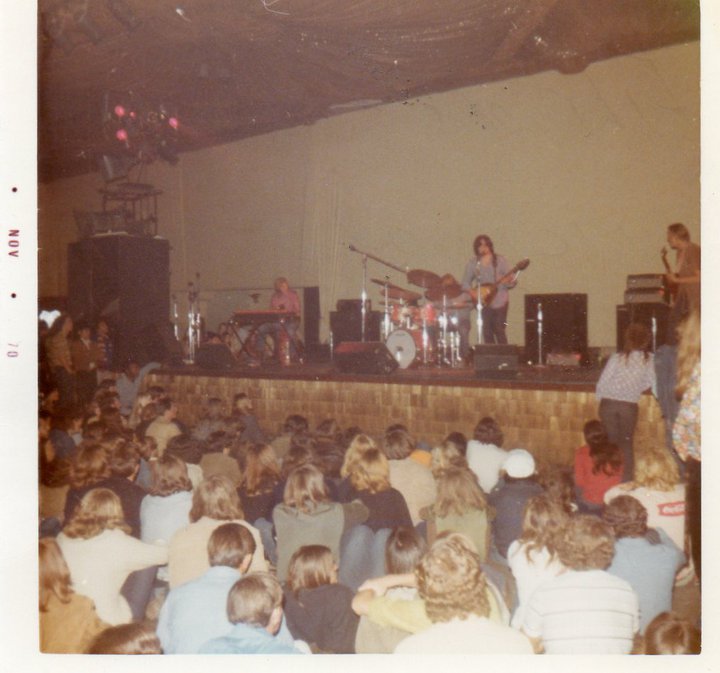
To begin with, when and where were you born and was music a big part of life in the Colli and Ross households?
Mark: I was born in Stockton, CA in 1950. Neither of my parents were musicians, but there was always music on in the house – records on the turntable, and local radio stations KSTN and KJOY. I became addicted to pop radio at a young age, and my older brother had a collection with records by Dion, Ray Charles, Elvis, Roy Orbison, Ricky Nelson and others.
Frank: I was born in Stockton, CA in 1948. My mother is Hawaiian and my father is Italian. My mother Dorothy is a marvelous singer. She looked like Ava Gardner and sang Lena Horne in the day. She was always singing around the house and still does at 84 years old. We did a CD together last year entitled Just Frankie and Me. Classic American standards by Sinatra, Nat Cole, and some Ray Charles. It came out great and I was happy to be able to do it with her. It’s available for a listen on YouTube. She performed during the Big Band era. On my father’s side, the great John Catalano was a San Francisco musician and music teacher for years. Played 10 instruments and was a guitar teacher for many of the Bay Area’s premier guitarists. So yes, music has always been a big part of my life. The first sound I heard as a baby was my mother singing.
At what age did each of you begin playing music and what were the first instruments that you played?
Mark: I started classical piano lessons at eight years old. My mother had taken lessons for a while and she decided it would be a good thing for me. I was hooked immediately. I played only piano for a few years, and when I started playing in bands I played a Wurlitzer 112 electric piano, then when I started playing organ I got a Vox Continental, then later a Vox Super Continental (with double manual keyboards) powered by a Vox Super Beatle amp.
Frank: I was 14 and guitar was my first instrument and voice was next.
How old were you when you joined your first bands? What were the names of the bands and what role did you play in them?
Mark: When I was thirteen my first band was The Chessman, with three of my junior high school friends. None of us were really singers, so we played easy vocal songs like “Louie Louie,” “You Can’t Sit Down,” “Farmer John,” “High Heeled Sneakers,” and instrumentals like “Green Onions.” That band didn’t get beyond rehearsing and playing private parties.
Next I played with The Coachmen, an R&B band from the south side of Stockton. They were well known in Stockton, and were looking for a keyboard player, and at the time there weren’t as many of us around as there were guitar players and drummers. The band was a mixture of white, Latino and Black guys. In North Stockton, Stagg High, where I went to school, and Lincoln High where Frank went were pretty whitebread, so to be playing R&B with guys that were really good was a great experience for me. We played high school dances on the South side – a lot of James Brown: “Please Please Please,” “Try Me,” “Night Train,” some Coasters songs, stuff like that. I was with them for several months until I met The Mal-T’s.
Frank: Frankie and the Fontels was my first band. I was the singer and guitar player. We played surf and soul. After that, Frankie and the Hiwaymen – all soul – and next I was recruited into Zephyr Blue that became Wildwood.
What kind of music did these bands play and did you play original songs or were they cover bands?
Mark: I wrote a few simple instrumentals in The Chessman. The Coachmen played all covers.
Frank: We played all covers.
By 1967, Mark, you were a member of the Mal-T’s. How did you become a member and who were the other members of the band? What was the origin of the band’s distinctive name?
Mark: I answered an ad that was posted in a local music store. The Mal-T’s were from Linden, which is in a rural area a few miles east of Stockton. I joined in late 1965. Bob Zachary was the lead singer and songwriter in the band. Danny Williams played guitar, Johnny Hensley played bass, and Steve Pierce was briefly the drummer, but was soon replaced by Tim Mora, who had recently moved to the area from Santa Rosa. Danny and Johnny also sang background.
The name came from the Maltese cross, which was a popular surfer emblem at the time. Later, and still now, it remains a popular biker emblem.
At first we played mostly surf music, but quickly started playing British Invasion music: Yardbirds, Animals, Beatles, Stones, Zombies, and American groups like the Rascals, Paul Revere and The Raiders, The Seeds, ? and The Mysterians, etc. We played a combination of Bob’s original songs and covers.
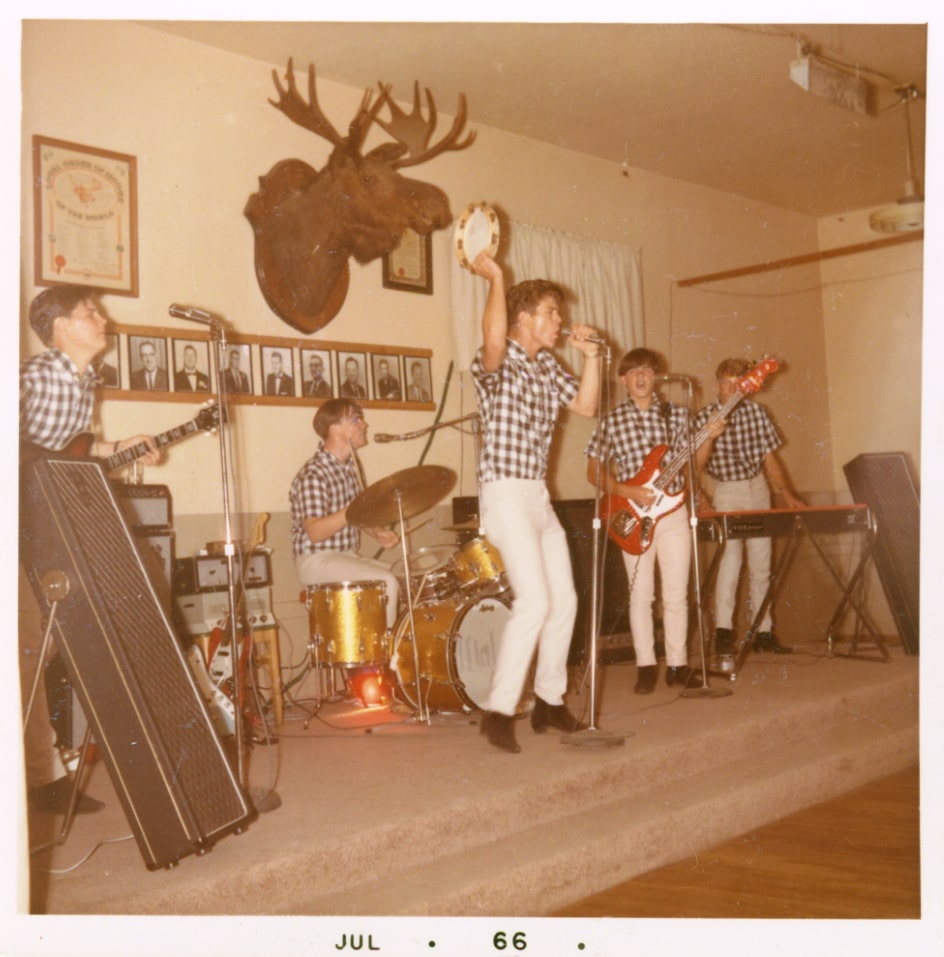
The Mal-T’s cut one impressive single, “Here To Stay” b/w “Stand Up Today.” Mark, how long had you been with the band when the 45 was recorded? Where did the session take place and who was the producer? Who wrote the tracks and how were they selected for release?
Mark: I was with the band for almost a year before we recorded the single. We traveled to LA in mid to late 1966 to record the songs at Stereo Masters studio on Melrose Avenue in Hollywood. The session was engineered by Bruce Morgan. He is also credited on the single as producer, but we laid the songs down exactly as we had rehearsed them, so it was essentially self-produced.
Bob Zachary wrote both songs, and as leader, chose them as the two to go on the single. The general band consensus was that they were his strongest songs and the most obvious choices. The original A-side was “Stand Up Today,” which got most of the airplay back then, but the B-side “Here To Stay” has since gotten most of the attention since appearing on the Pebbles Vol. 9 CD years ago.
I remember after finishing the session, we all went down that night to catch Buffalo Springfield at The Whiskey a Go Go. Heady stuff for a fifteen-year-old.
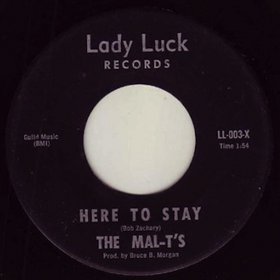
Released on the band’s own Lady Luck label, how many copies were pressed? How was distribution handled? Did the single get radio airplay, and how were sales?
Mark: I don’t remember how many records were pressed. As far as I know, the only promotion was done by Bob and Danny driving around to various radio stations in the Central Valley to get it played, and they would go to the local record stores in those towns to make sure it was available to buy. The most airplay we received was on the local Stockton stations KSTN and KJOY. It was a real rush hearing it on the radio. We also played in Modesto a couple of times on a TV show that was like a local version of American Bandstand. I wish I had that on video.
As far as I remember, sales were good locally, but I think that’s about it. The single is considered rare these days – I recently saw one sell on eBay for $575.00! I don’t even own one myself except for the original acetate from the session.
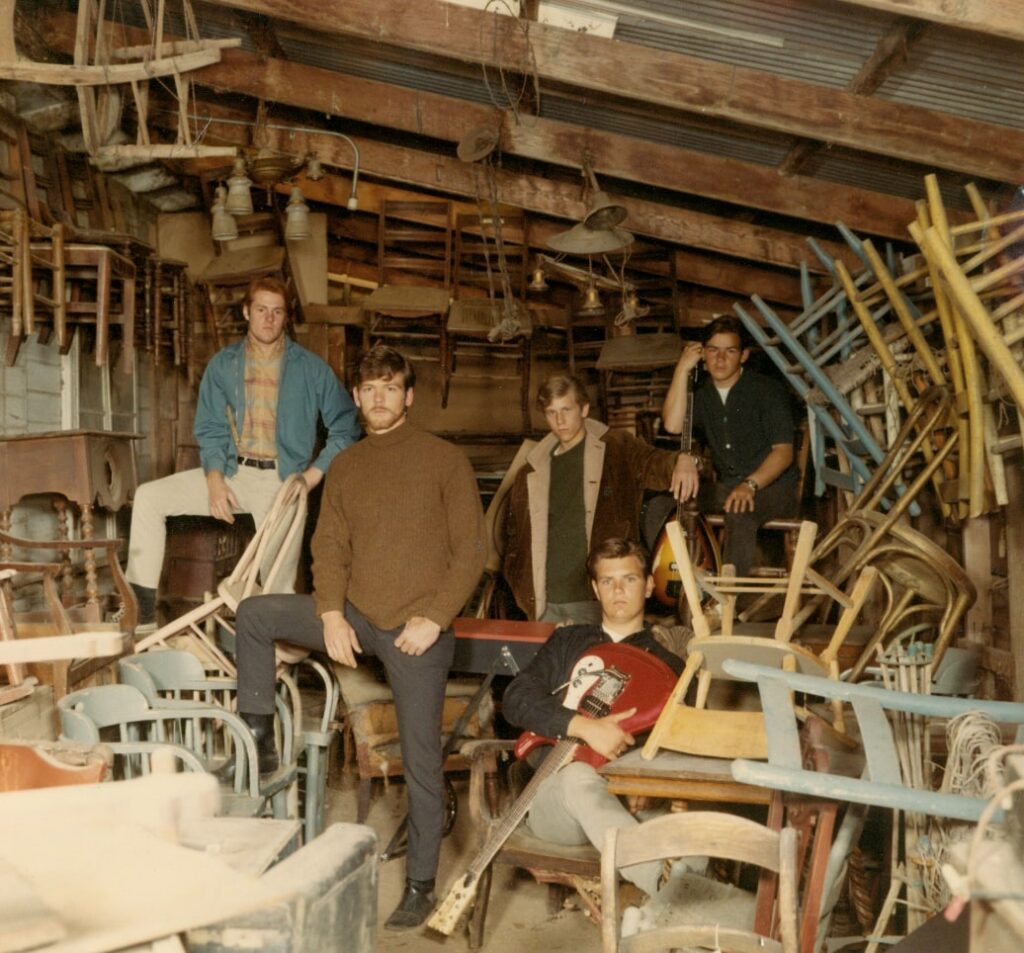
What sort of venues did the Mal-T’s play and did the band share the stage with any bands our readers may be familiar with?
Mark: The Mal-T’s played a lot of high school dances all over the Central Valley. We also would play various town halls, local Stockton clubs such as Music World and Del Rey’s Pacific Playhouse, and dances in larger venues such as the Sonora Fairgrounds up in the Sierra foothills. One of my favorite venues we played was The Minotaur in Stockton. It was an old house converted first into a beatnik-style coffee house with poetry and bongos, then a stage was put in and local bands such as The Family Tree, Gary Wagner, the Mal-T’s and others would play there regularly. It also drew some bands from the Bay Area, most notably Country Joe and The Fish.
I don’t remember The Mal-T’s ever opening a major show with a name act. We usually headlined our shows, sometimes with a local opening band. In some of the smaller towns in the Valley, people thought we were a national act because we were being played regionally on the radio alongside the Beatles, Stones, Rascals, etc. We even signed autographs on some occasions—pretty funny.
Several changes took place with the band at this point, the band’s name became Zephyr Blue and a guitarist, Frank John Colli, took over as the group’s bassist. Why the name change? Who made up the band at this point and did the band’s sound change with its name?
Mark: Danny Williams was drafted into the army, so he was replaced on guitar by John Turner, who had been in a Stockton band called The Cloud. Then Johnny Hensley left the band, and was replaced on bass by Robbie Orr, who was from Ceres, but he didn’t last long. That’s when Frank Colli came in on bass. I don’t think he had played much bass before—he was an R&B singer and guitar player, definitely not a British Invasion type of guy.
So Bob, Frank, Tim, John and I started rehearsing in a barn where Bob and his wife lived, on a property near Linden that was owned by Bob’s mother-in-law.
We changed the band name to Zephyr Blue at that point, mainly because The Mal-T’s name sounded like a surf band and we felt it was outdated. With the addition of Frank and John, the band soon took on a more aggressive and meatier sound.
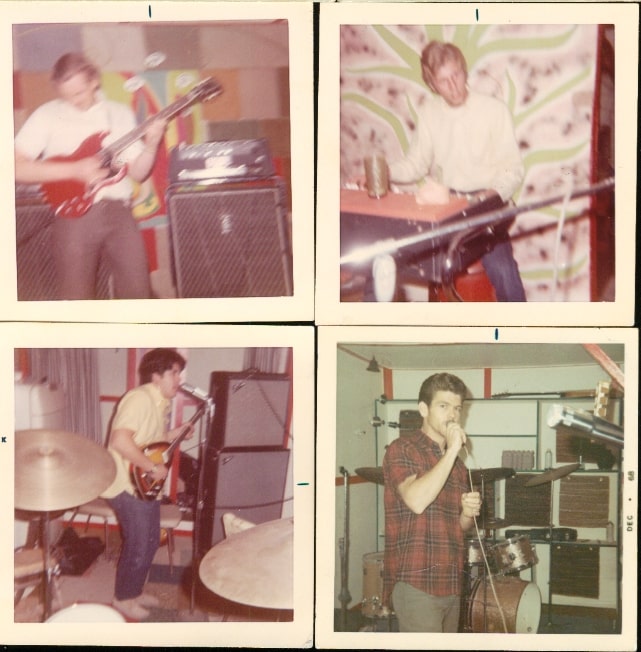
The band did some additional recording around this time with original vocalist Bob Zachary. Where did these recordings take place and were they done under the name the Mal-T’s or Zephyr Blue? What became of these recordings?
Mark: Bob was responsible for our introduction to Max Weiss and the old Fantasy Records studio on Treat Avenue in San Francisco. We did several sessions there as Zephyr Blue, all of them with Bob’s songs. I don’t remember much about the particular songs we recorded there during this time, and I have no idea what happened to the tapes. Bob probably has them, and I’m not sure what became of him either. I haven’t seen Bob since around 1968.
The band signed a contract with Max Weiss’ Fantasy label, but before any recordings took place Bob Zachary left the band and Frank took over as lead vocalist. Known for his powerful vocals, how did this change the group’s sound and its dynamic?
Mark: Bob announced that he was breaking up the band. He said he was starting a new band with Doug Wareham, a guy from Modesto who had had a band called The No-Namees, so that was it for Zephyr Blue. It didn’t occur to the rest of us not to carry on, so we started rehearsing with Frank on lead vocals. With Bob out of the picture we became something else entirely, and the music immediately took on a tougher edge than The Mal-T’s ever had.
I was writing during the Mal-T’s / Zephyr Blue days, but Bob was not really open to contributions from other writers, so this was a new creative era for us—we began writing the songs, and we were free to be as balls-out as we wanted. One of the interesting things that defined Wildwood was that we were a rock band fronted by an R&B singer singing rock. Frankie has always had great soul chops and his vocal style worked great in that context.
Frank: Our sound became much more aggressive with the lead vocal to match. We didn’t hold anything back. The music morphed into a much heavier guitar- and bass-driven sound with Mark constantly pushing us with a crushing full chord sound and Tim driving it home behind his drums. John Turner had a very limited understanding of chording and he was primarily a lead guitarist and a power riff man. We worked with what we had and kicked serious ass.
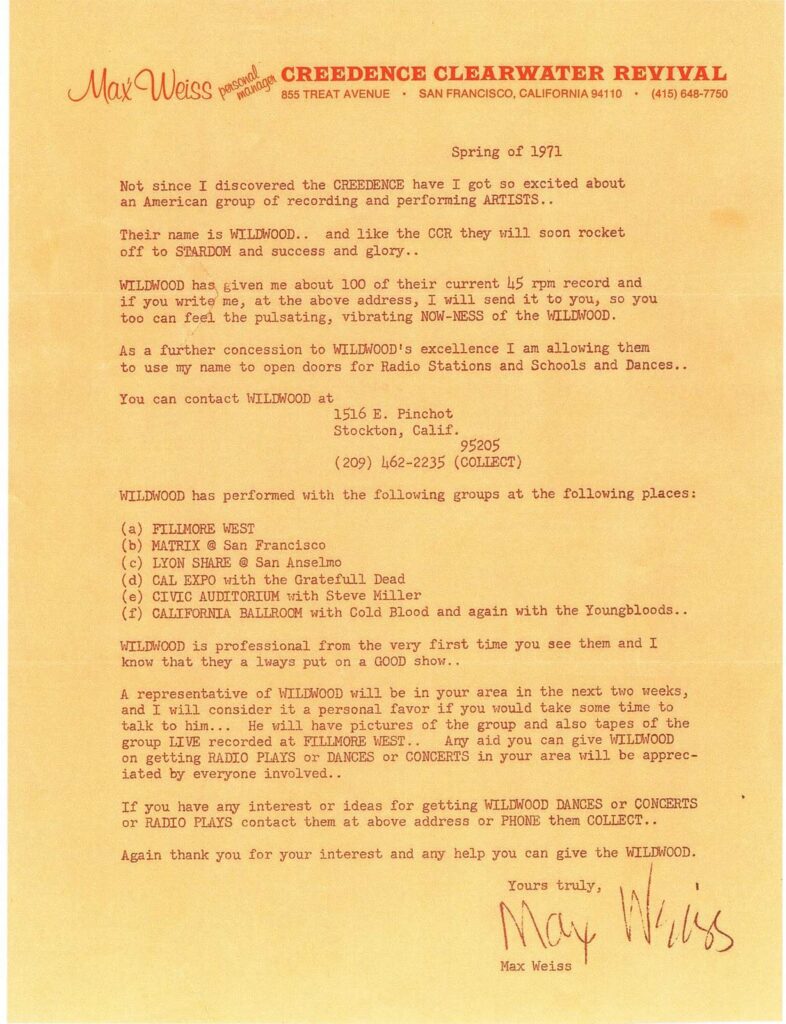
Saul Zaentz bought Fantasy Records from Weiss and started two new labels, Magnum and Onyx Records. Wildwood’s most revered track—the incredible “Plastic People” b/w “Swimming”—was released as Magnum Records catalog #420, produced by Weiss. Is it true that Frank brought the song “Plastic People” to Wildwood? When was it penned and what was the song written about?
Mark: After Saul Zaentz bought Max’s share of Fantasy Records, Max started the two labels Magnum and Onyx. “Plastic People” and “Swimming” were the first songs that we wrote in 1968. Frank brought in finished lyrics for both songs.
“Plastic People,” like most of our songs, came about through jamming on grooves and riffs until we hit on something we liked. I usually came up with the chord progressions. My goal with the writing was to make the songs go somewhere interesting—progressions, arrangements, and melodic instrumental hooks that the vocal could play off of. That was easy with Frankie. Whatever chords I’d throw at him, the first thing he would sing was always good, melodically and emotionally.
Aside from the lyrics written by Chalker, Frank wrote most of the lyrics. The only exception would be the lyrics for “The Weasel,” which I wrote.
Frank: The way we would create our original music was by brainstorming until we came up with a riff while jamming at rehearsal. Then Mark would usually come up with a chord progression of some sort and we’d put it all together until we had a completed piece of work.
In most cases, the next step was coming up with the lyrics, which usually fell on me since I was the vocalist. And to be perfectly honest, I was the only band member that could sing—if you could call it that. I sounded much older than I was.
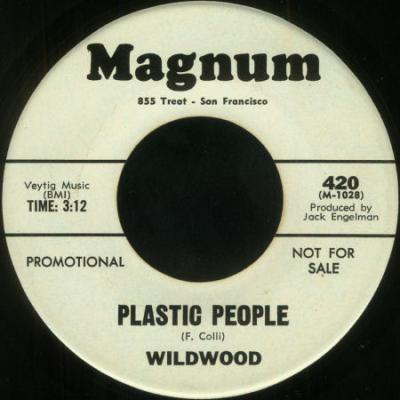
I wrote the lyrics to Plastic People after being turned down for a part-time job for refusing to cut my hair. It just seemed to me at that young age that I was surrounded by hypocrites—going through life and bullshitting people about who they really were by living lives that were filled with lies.
Swimming came about after my high school sweetheart left to go away to college, and I felt like I was drowning between the love I had for her and the love I had for rock and roll.
How many copies of “Plastic People” were pressed? How much radio airplay did the track receive? How was distribution handled by Magnum and how many copies of the single were sold?
Frank: 500 copies were originally pressed. Magnum did nothing to promote it at all. Max wrote us a cover letter for our press kit and we drove all over the country taking it to radio stations and mailing it out to get some airplay. We did quite well with it in the Central Valley of California where we were from. Beyond that we didn’t have much luck. fjc
Mark: We did get a little airplay on KMPX FM in San Francisco—we also did a live on-air interview with that station.
Somewhere around this time Mark switched from playing a Vox Continental to a Hammond B-3 with twin Leslie speakers. How did this change the band’s sound? Is there any truth to the rumors that this switch may have been made so that Ross’ keyboards could compete with John Turner’s twin reverb sound?
Mark: Although my changing from the Vox to the Hammond B-3 filled out the sound more, I still have a fondness for the Vox sound. It’s interesting to hear the two different versions of ‘Free Ride,’ one with Vox, and the other redone with the B-3.
The rumor about my switching to Hammond to compete with John’s volume isn’t quite accurate. I would have switched anyway just in the natural progression of things. The B-3 offered me a broader palette of sound and more texture with the Leslie speakers. Also, the Vox organ sound was becoming less popular as time went on.
I got the Leslie first, so for a while I ran the Vox Continental through the Leslie until I bought the B-3. That actually sounded pretty damned good.
The issue wasn’t strictly about the volume. Hey, it’s rock ’n’ roll—loud is good. Beefing up my amplification gave me all the power I needed, but I think that the rumor has more to do with my objections to the volume being at full throttle all the time. There was a tendency towards that, so I fought hard for the band to pay more attention to dynamics.
A song will have so much more impact if you let the music breathe and give it somewhere to go. Just banging it out with the volume stuck on eleven didn’t appeal to me.
When Wildwood played live, we had a “take no prisoners” attitude. We were on a mission to get on stage and kick some serious ass, and we did, but at times it could be a challenge to control the adrenaline.
The band’s second single “Free Ride” b/w “Wildwood Country” was released as Magnum #421. The b-side is notable as it represents Wildwood’s first recording with lyrics by the enigmatic William Chalker. Who was Chalker and how did he become involved with Wildwood? What was his relationship with the band?
Mark: Chalker (William Chalker) was introduced to us by Max Weiss. He had been a merchant seaman. He wore stovepipe jeans with the cuffs rolled way up 50’s style, with black workboots and flannel shirts, definitely not the hippie type. He always had a bag full of pills of all different shapes, sizes, and colors – uppers, downers, and in-betweeners. Chalker was usually in a mildly wacked-out state, not the most stable personality.
Max thought his lyrics might be a good match for us, and suggested we check them out. He wrote some crazy stuff — very dark, twisted, and vivid imagery — really inspiring stuff. Check out ‘Steel Cathedrals’, ‘Choo Choo Thunder’, ‘Durango’, ‘Mary Midnight’, ‘Wildwood County’.
Chalker would record rambling demo versions of his songs, some with just an acoustic guitar, and some with backing band. We preferred to just see the lyrics and write our own songs with them. He would send us packages in the mail with tons of lyric ideas – we would just choose one that resonated with us and go with it.
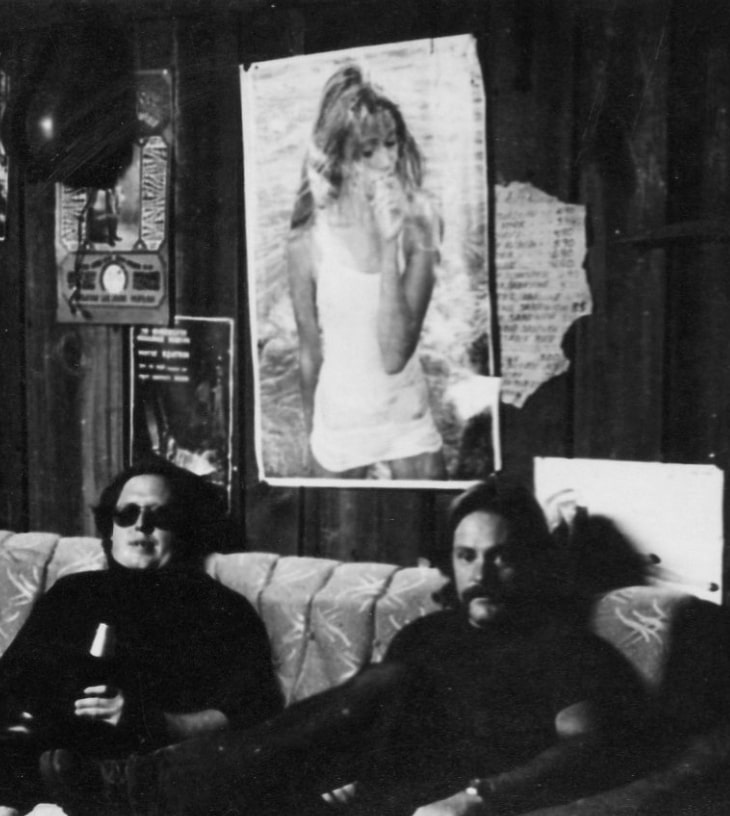
One of my personal favorites by Wildwood is “Choo Choo Thunder.” Could you tell me what this song is about and how you came to record it?
Mark: ‘Choo Choo Thunder’ is a drug song, plain and simple – haha. Chalker loved his pills (“…I get there quick, I got the speed…”). The lyric inspired a rhythm like a fast moving train. I don’t remember much about the recording session, but it became one of our favorite songs to play live.
With two singles released, were you playing larger venues now? What was a typical Wildwood gig in 1969 like? Were you playing all original songs or did you do any covers? How long did a typical show last?
Mark: We played a lot of large shows opening for name acts in the Central Valley, Bay Area, Monterey, and the Sierra foothills. We played the Fillmore, and most of the San Francisco and Marin County clubs at the time – The Matrix, The Lion’s Share, The Bodega in Campbell, The Chateau Liberte in the Santa Cruz Mountains.
We promoted many of the Central Valley shows ourselves, hiring headliners like Tower Of Power, Cold Blood, and other Bay Area name acts, securing the venue, promoting and selling tickets, and then we would open the show.
As an opening act, we would usually play an hour set, all original material. Every once in a while we would do a four-hour gig at a ski resort in Bear Valley in the Sierras. In that case, we would throw in a few covers to get through the night.
Frank: We were playing all over the state — mostly the Bay Area, Monterey Peninsula, the Central Valley, and the Sierra Mountains. We promoted a lot of our own shows. If we self-promoted, the show was usually 4 hours long with an opening act. We only played Wildwood originals.
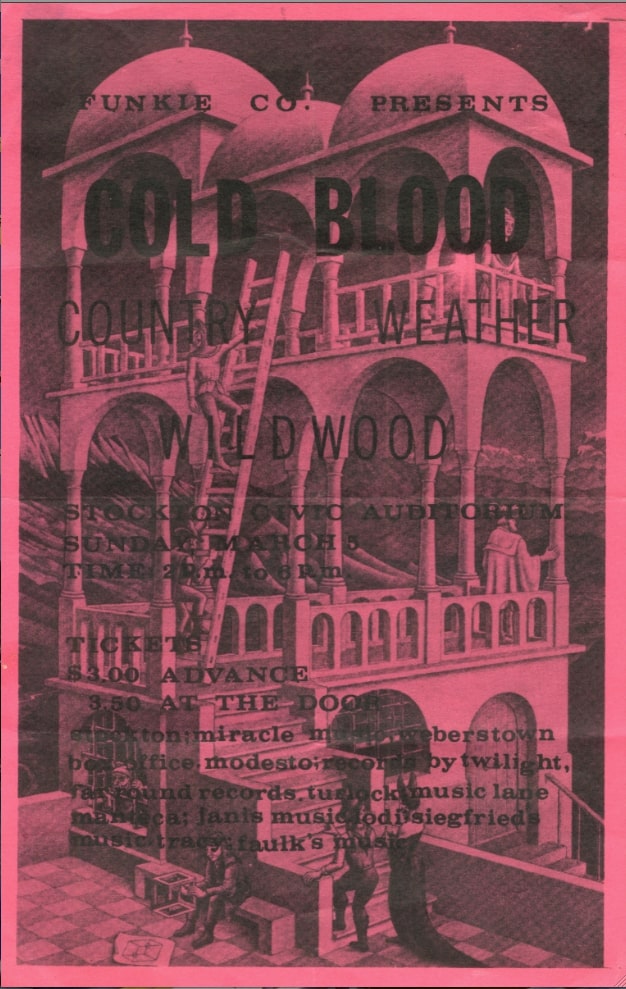
Who were some of the artists that you shared the stage with? What are some gigs that stick out in your mind that you might describe to our readers?
Frank: The first time we played Fillmore West — the way it felt to walk out on that stage where everyone from the Rolling Stones to Jimi Hendrix had performed, and to look over at stage left and see Carlos Santana and his bandmates watching us play.
Opening up for the Grateful Dead, Steve Miller, Elvin Bishop, The Doobie Brothers, Ike and Tina Turner, Cold Blood, and so many more that I can’t remember — and getting standing ovations and call backs at every show. Now that’s a batch of good juju.
Mark: The Fillmore show definitely stood out, as well as playing with the Grateful Dead at Cal Expo in Sacramento, and opening for The Doobie Brothers at The Chateau Liberte in the Santa Cruz Mountains just before their breakout album Toulouse Street.
We also had quite a large fan base in the Modesto/Turlock area where we promoted many of our shows — those were always rocking.
Mark: Both songs on our first single, Plastic People and Swimming, were engineered by Max Weiss. After that, Max set us up to record ourselves and then disappeared upstairs to do crossword puzzles. Whoever was closest to the control room door would run out, hit record, and then rush back in the studio so we could count off and play.
The studio was in the basement of the old Fantasy warehouse, where shelves were stacked with albums by Lenny Bruce, Bola Sete, Cal Tjader, Odetta, Creedence, and other artists from Max’s Fantasy Records days. The place was funky, the wiring was sketchy, and we struggled to get a good sound — so the recordings have a raw edge. We don’t know what happened to the original masters, so the CD you hear contains second- or third-generation dubs.
Many of the sessions blur together after all this time, but one moment sticks out: when we recorded the first version of Steel Cathedrals. Max had a Rhodesian Ridgeback named Freako who hung around the studio. While we were laying down the track, Freako barked right outside the studio door — perfectly timed during the intro. You have to listen closely: it’s on the second beat of the 16th bar (about 30 seconds in), just before the song breaks open. I always thought that bark was perfect — like a hound from hell.
There were some unforgettable moments beyond our usual weekend sessions, too. Jazz pianist Vince Guaraldi once dropped by — Max was his manager — and jammed with us on a couple of songs. He played the studio grand piano while I played the B-3. That was a real treat.
Another time, Max called and asked if we wanted to record with Gene Vincent. Of course we said yes, so we spent a day recording a version of Kris Kristofferson’s Sunday Morning Coming Down with him. I wish I still had those recordings — Gene was a true gentleman. Sadly, he passed away less than a year later.
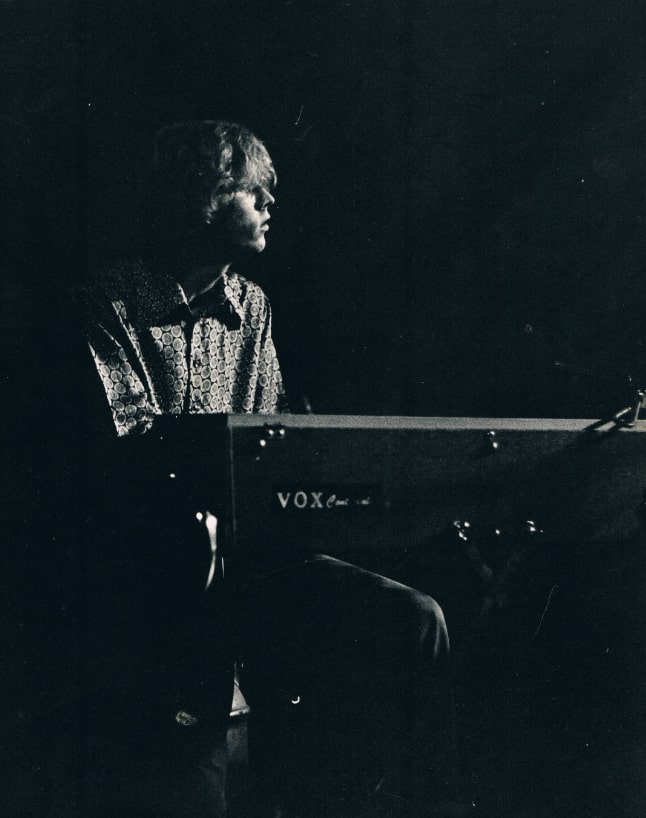
In 1971 you recorded at Wally Heider’s studio in San Francisco with Russell Schmidt, and A&R guy from Mercury Records in attendance. Was there any talk of a Wildwood album?
In 1971, Mercury Records A&R guy Russell Schmidt took us to Wally Heider’s studio in San Francisco to record songs aimed at securing an album deal with Mercury. That day we laid down three tracks: Knock On Any Door, Lonesome Roads, and a remake of Steel Cathedrals. The sound quality at Heider’s was definitely superior to Max’s studio — the tracks sounded great. Still, I prefer the original Steel Cathedrals from Max’s studio. The Heider version felt rushed and lacked the spontaneity and raw anguish of the original.
Unfortunately, nothing came of the Mercury deal — they passed on us. Later on, after Wildwood, Russell Schmidt helped Frank land a lead vocalist spot with Sahara, a band made up of some of San Francisco’s finest musicians at the time.
Frank: After Mark left the band in 1972 to explore other musical options, there was no attempt to replace him. I left soon after, and that was the end of Wildwood. John and Tim tried to keep things going, but nothing came of it. The Wildwood sound was finished.
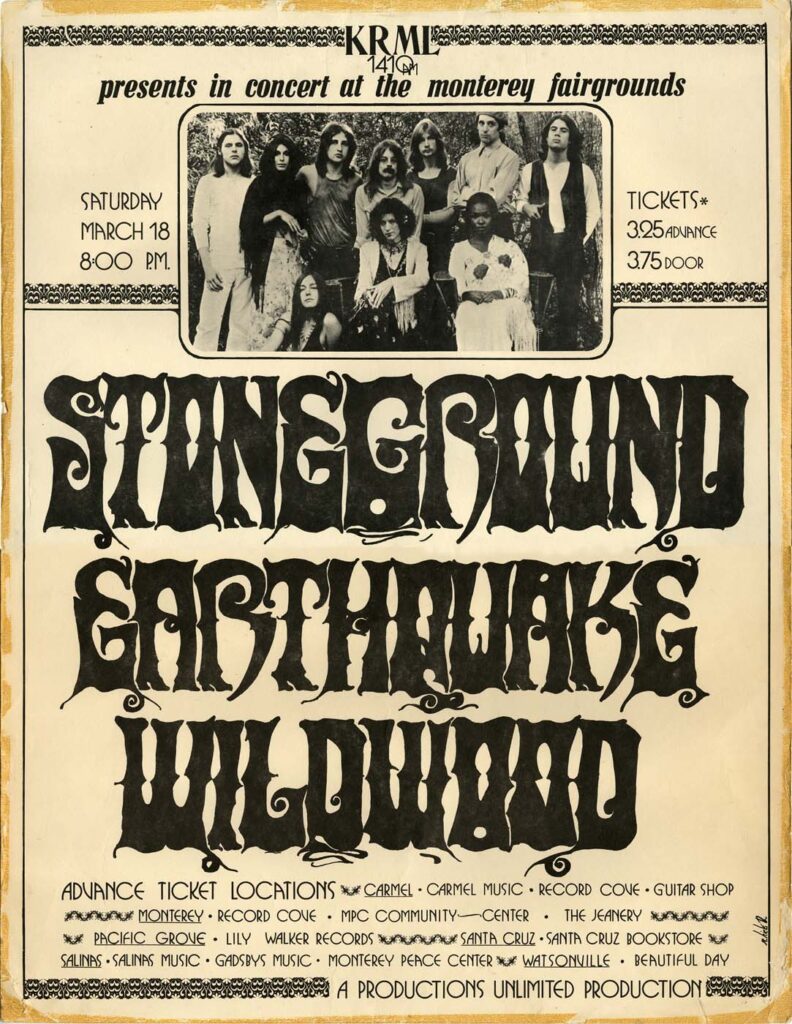
Forty years ago Wildwood called it a day, with two singles and a bag full of dubs from the Fantasy (Magnum) sessions. Looking back, how do you feel about your time spent in the band? Are there any regrets? Any magical memories?
Mark: No regrets at all. It was a great time in our lives, a valuable education, and for all of us, our first experience playing concerts to large audiences. As Frank said, we gave it our best shot. It’s impossible to single out even a few magical memories, we had four years of them. It feels great now to have the music and the story out there for people to experience, even if it took forty years to do it. John left us a few years ago, Frank and I have remained best of friends all these years, and recently it was great to catch up with Tim after so much time gone by.
Frank: It was a great time for a group of young American Rockers giving it there best shot. No regrets. And a stack of great memories.
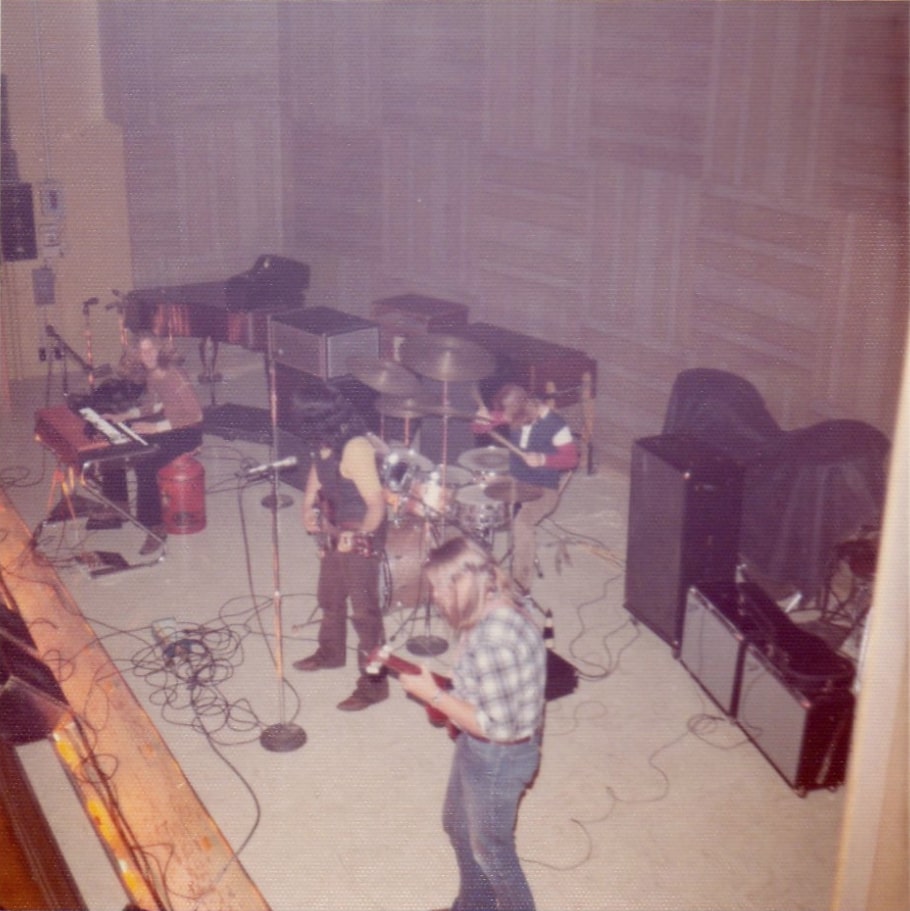
Both of you have remained active in the music business in these past forty years. Frank, you are still quite active in the Central Valley, CA music scene. Would you share some of your adventures post-Wildwood? What are you up to these days?
Frank: Still writing and performing and loving it. Mark and I have remained best of friends. Periodically we perform together locally for old friends. Life and music is a wonderful gift.
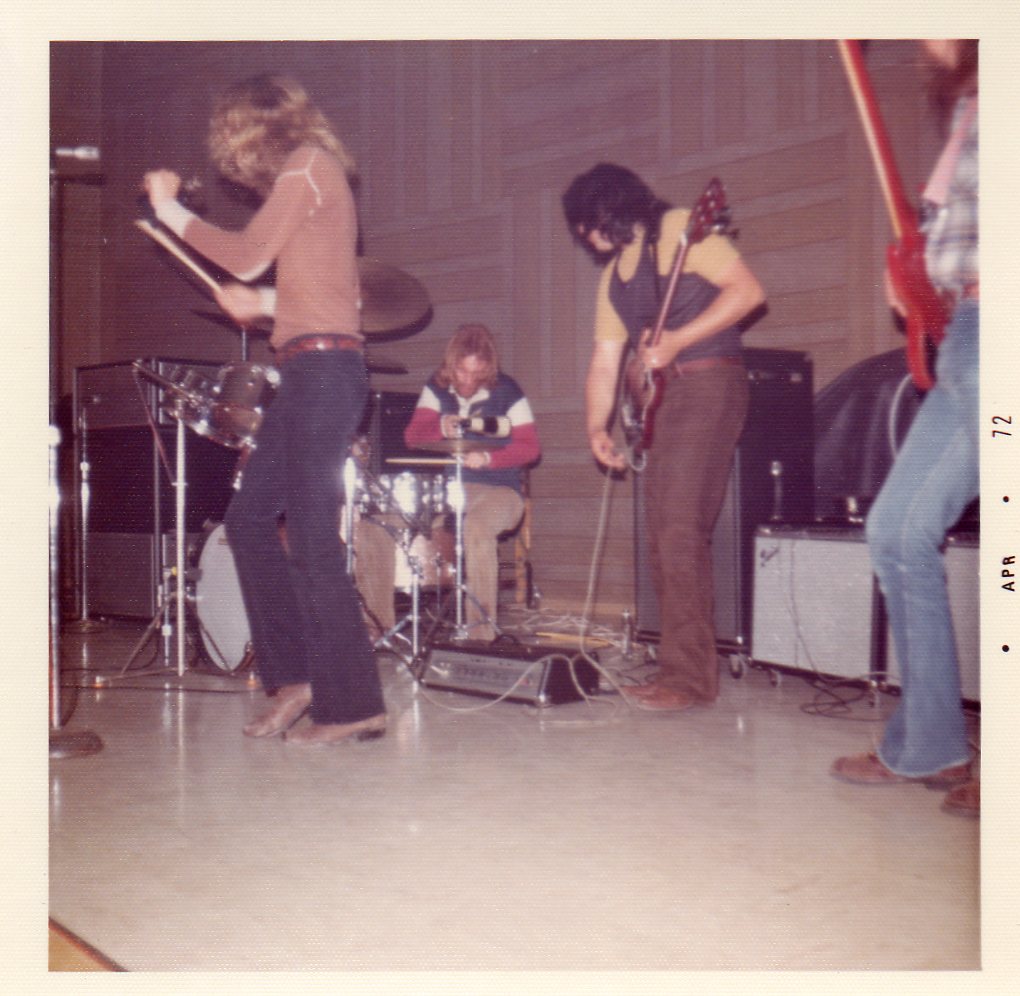
Mark, you spent time in the Mark-Almond Band. Would you tell us a bit about that chapter in your life?
Mark: One of my greatest experiences. I was already a fan of Jon Mark and Johnny Almond when they were in John Mayall’s Turning Point band, and became a bigger fan when they left to form Mark-Almond. I remember when I first heard ‘The City’. Nobody sounded like them. With Jon’s acoustic guitar, vocals, and songwriting, and Johnny’s jazz/blues woodwinds, they created a unique stew of folk, rock, blues, and jazz with Latin rhythms.
After leaving Stockton, I had moved to the Monterey peninsula in 1973 and was involved in the local music scene there. In 1975, I heard that Jon Mark had recently moved to Carmel, and when the owner of a local recording studio offered to introduce me, I jumped at the chance. Jon and I started hanging out a bit – they had just finished the album ‘To The Heart’. In 1976 they went on a short tour, and when they returned, their original keyboard player Tommy Eyre decided to leave the band, and Jon invited me to play with them. Over the next four years I toured with them and we recorded two albums. One was a studio album ‘Tuesday In New York’, which we recorded in Monterey in 1977 / 78. That album was released in Europe in 1981. The other recording was a live album recorded on tour in New York in 1978. ‘Best Of…Live, The Mark Almond Band’ was released on Michael Nesmith’s Pacific Arts label in 1981.
On tour, the band thrived on spontaneity. They liked to change things up each night, so you really had to be on your toes. They were also pranksters. One night in St. Louis on my first tour with them, Jon announced halfway through the show that there would be a surprise solo spot, so I thought someone was going to sit in. Then Jon announced my name, and the band exited and left me alone on the stage. It was the ultimate trial by fire. I stayed in touch with them through the years, and I played at Johnny’s memorial service when he passed away in November 2009.
After moving to Los Angeles in 1980, I played with a lot great artists through the Eighties and into the Nineties, such as Chuck Berry, Bo Diddley, Carole King, Linda Ronstadt, Delbert McClinton. Brenda Russell, Brian Wilson, Ronnie Laws.
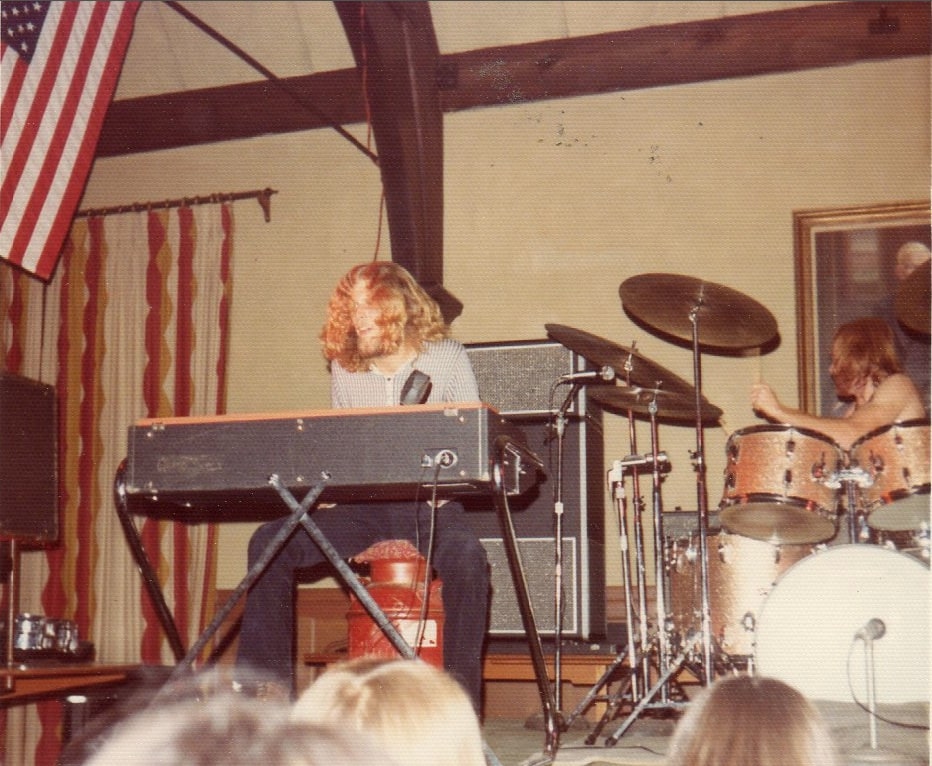
A complete Mark-Almond concert recorded at The Tower Theatre in Philadelphia from
our 1978 tour can be heard at Wolfgangs Vault.
Here are three Mark-Almond Band YouTube links below from the two albums mentioned above.
‘The City’ from ‘Best Of…Live’
‘Lonely Girl’ from ‘Best Of …Live’
‘Tuesday In New York’ – the title track from the album ‘Tuesday In New York’
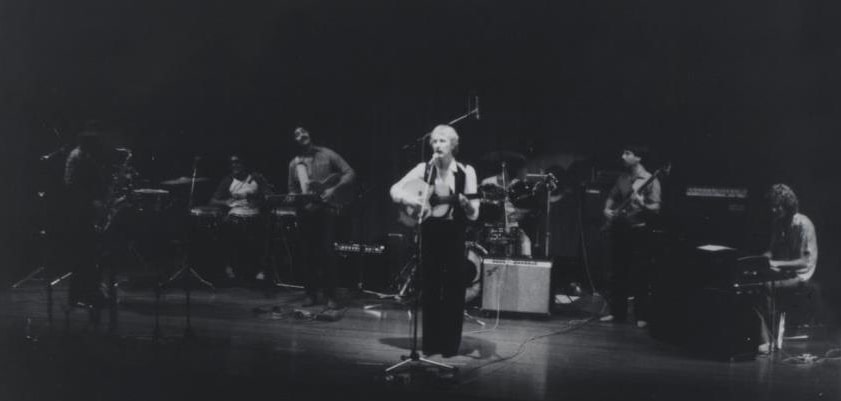
More recently you have written music for television and have won two Emmy Awards. What were they for? What are some of your other television-related exploits?
Mark: In the mid-Nineties, my focus began to shift from playing live to composing. I started composing music for production music libraries for placement in television shows and films. Over the years, I’ve written music in many genres – drama, action, romantic comedy, entertainment, sports, etc. Aside from composing for specific shows such as Entertainment Tonight and Extra, I’ve had music in hundreds of shows worldwide.
The Emmy Awards were won in two consecutive years (2007 and 2008) for Outstanding Music Direction and Composition for a Dramatic Series. The show was Guiding Light, for which I wrote music underscore from 2003 to 2008. When they went off the air in 2009, Guiding Light had been on for fifty-four years, the longest running TV series in history. That was a really fun gig while it lasted, and I was working with great people.
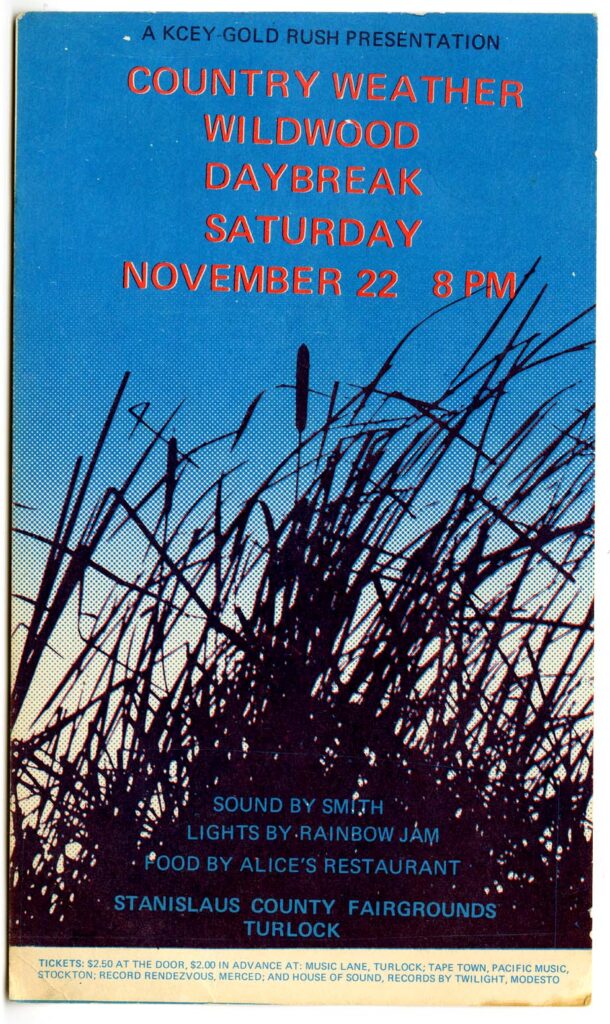
Frank, what is a typical day in the life in the year 2012, nearly 2013, like for you? What are your favorite activities these days?
Frank: I still continue to rehearse guitar and work on my vocal style and original music on a daily basis. My website frankjohncolli.com and CDs I have available on CD Baby, Amazon, and iTunes keep me busy. I enjoy a good gym workout and spending time with my family and children. My son is an attorney in San Francisco and my daughter is in the restaurant business with television personality and chef Guy Fieri.
Mark, I’ve seen several music videos by your wife. Are you involved with her career? What is a typical day in your life like today and what brings you the most joy?
Mark: My wife Ann Kelly is a singer/songwriter. I produced and arranged her debut EP Petals and Thorns, which we released on our own label October Daze Records last May. Ann and I also co-wrote the songs. The music is a blend of pop/rock with jazz and blues influences, and the CD has received substantial airplay nationwide on Triple A format radio as well as on Slacker.com internet radio. We’ve been playing shows in Southern and Northern California, and we hope to hook up a tour in Europe this year.
A typical day is spent in my studio. Ann and I are working on songs for a new release, and my composing for television is an ongoing endeavor. Spending time with my wife and making music brings me the most joy. Oh, and traveling — we love that too.
Below is a link to Ann’s website for samples of the songs on the CD and video links to our three YouTube Videos:
‘Who Do You Think You’re Foolin’
‘Between The Lines’
‘Undone Without You’
What about the mysterious William Chalker? When was the last time either of you saw or talked to him? Do you have any idea of his whereabouts?
Mark: We’ve all tried every way we know over the last couple of years to locate Chalker, but with no luck. I think it was Tim who saw him last, and that was probably around 1972.
Frank, one last question for you. You were known in your Wildwood years for having a powerful set of pipes. Have you still got ‘em? Does the band still have to turn up to be heard over your booming vocals?
Frank: HAHA! Now that’s a wives’ tale. I’ve been blessed with a powerful voice and have no problem projecting. A strong voice can’t compete with a band that’s too loud and a PA that can’t put you over the top. The quicker a singer can learn that the better. If the audience can’t understand what the singer is saying the band is just too damn loud. Balance is key.
Thank you both so much for agreeing to this interview and for being so gracious through the whole process. Is there anything I have neglected to address or that you would like to add? Please feel free.
Mark: I’d like to give huge thank yous to Joey D of Frantic Records, and Alec Palao of Ace Records. Without them, the Wildwood project would never have happened. Kevin, many thanks to you for the interview, and to Klemen for having us in It’s Psychedelic, Baby. Last but not least, a big thanks to my Wildwood cohorts for some of the best times.
Kevin Rathert

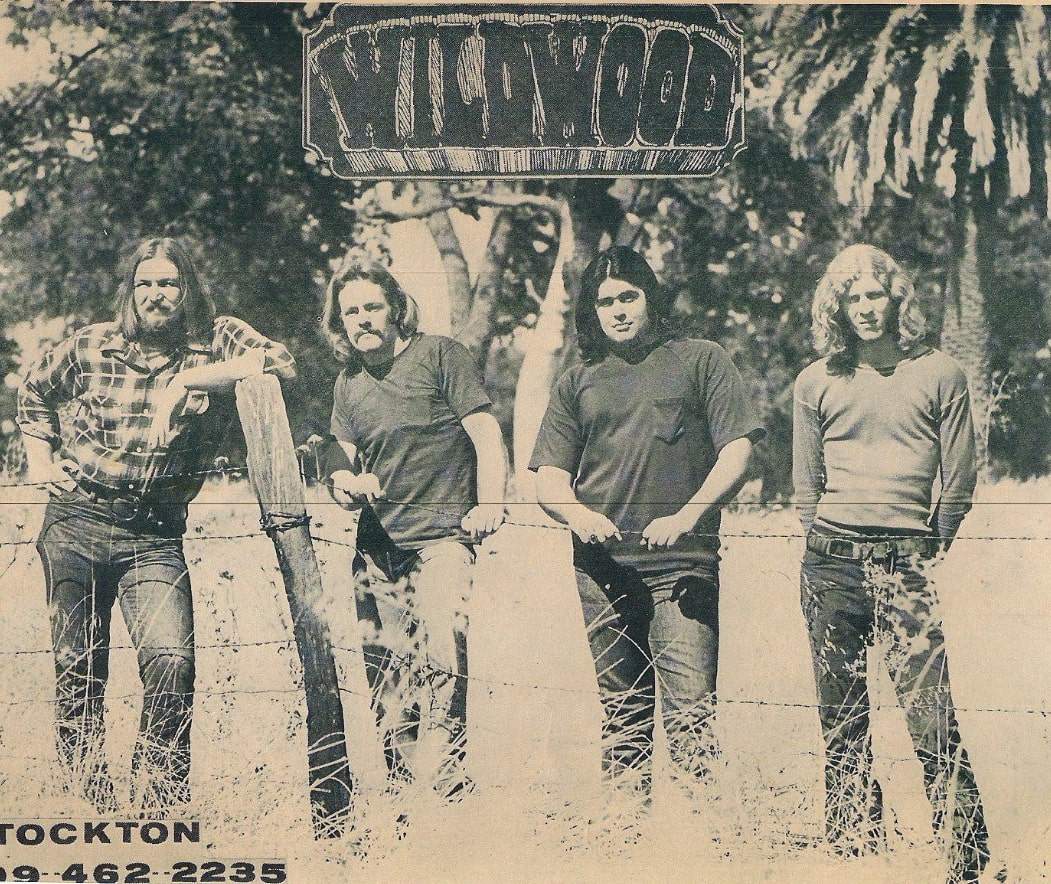
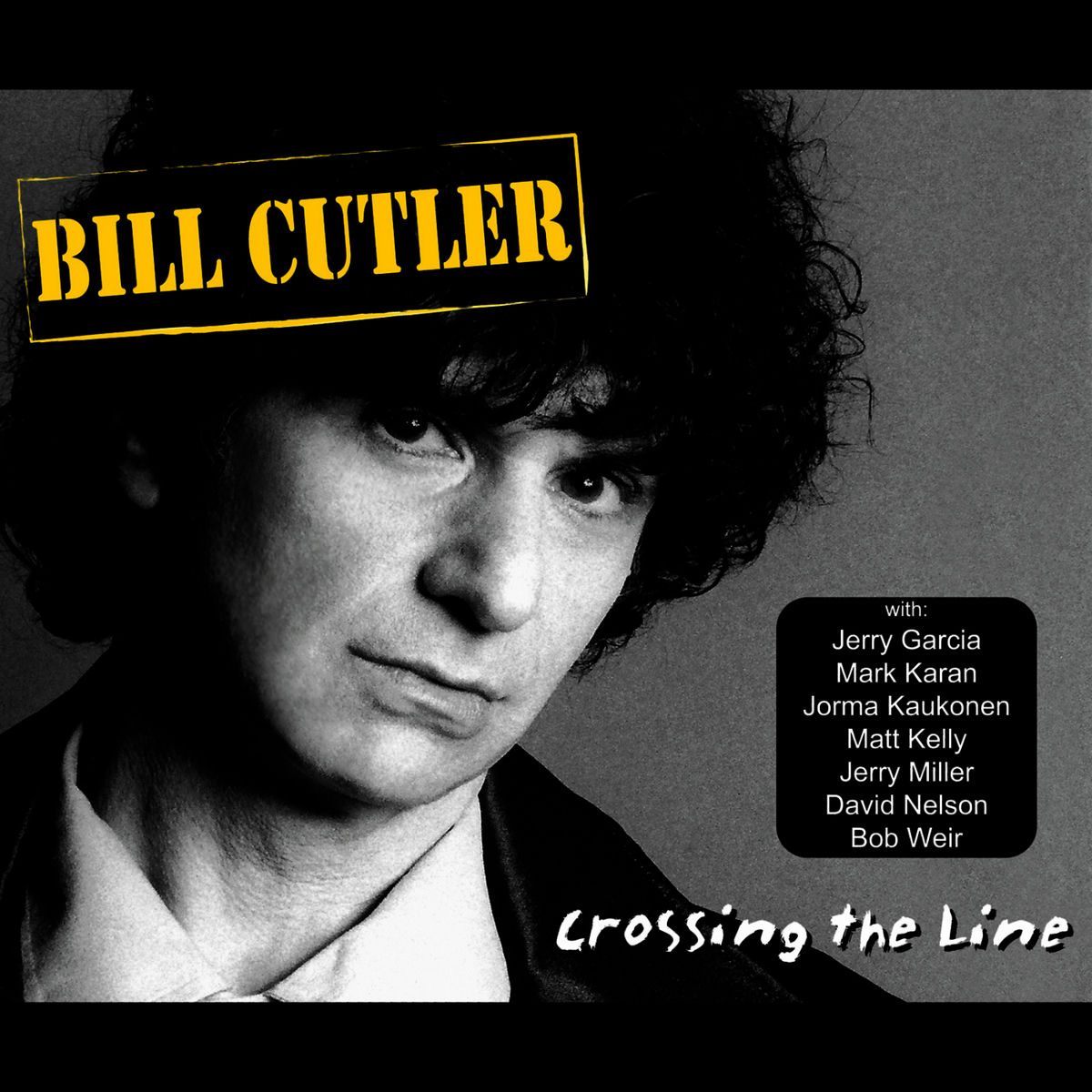
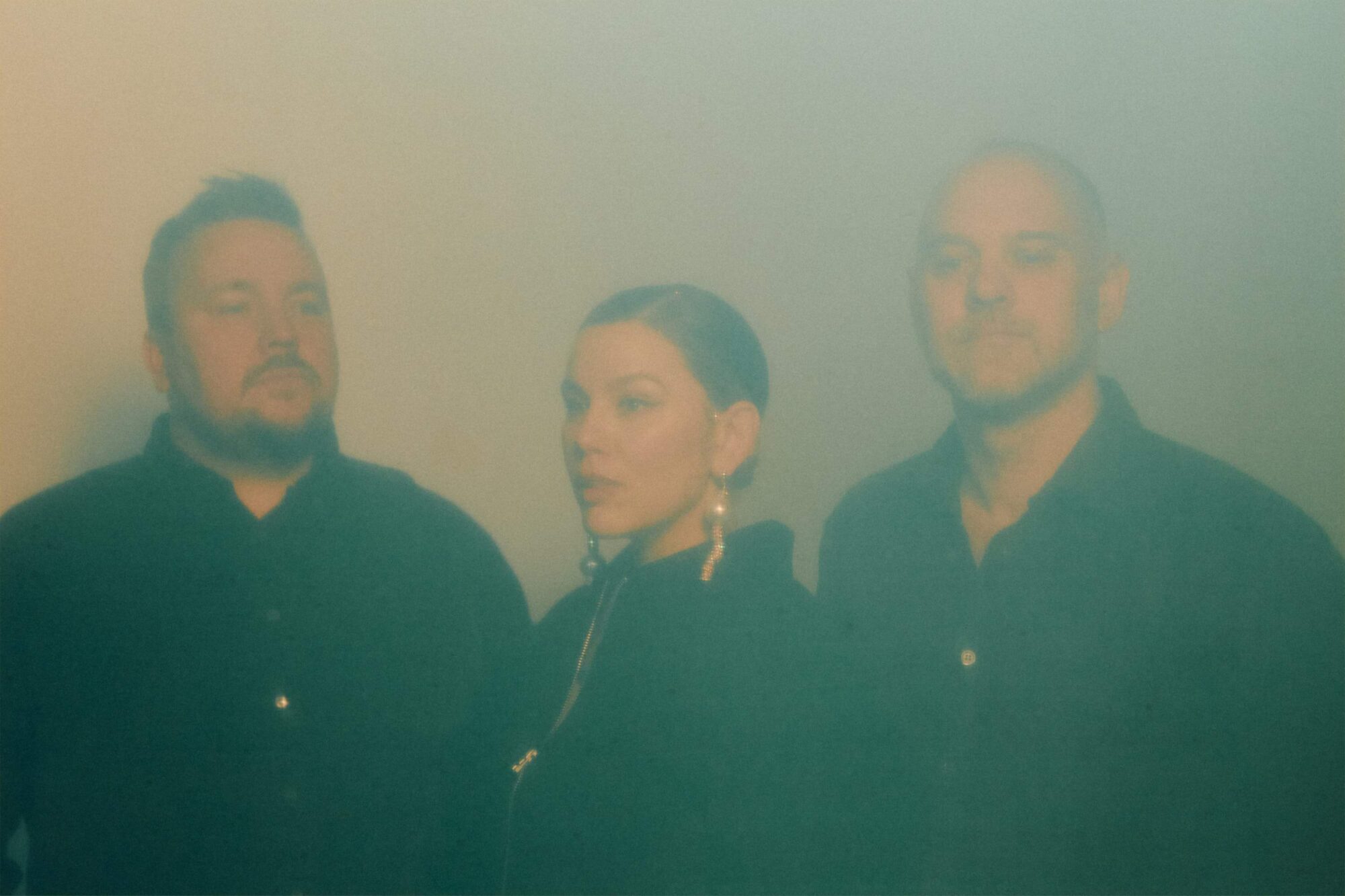
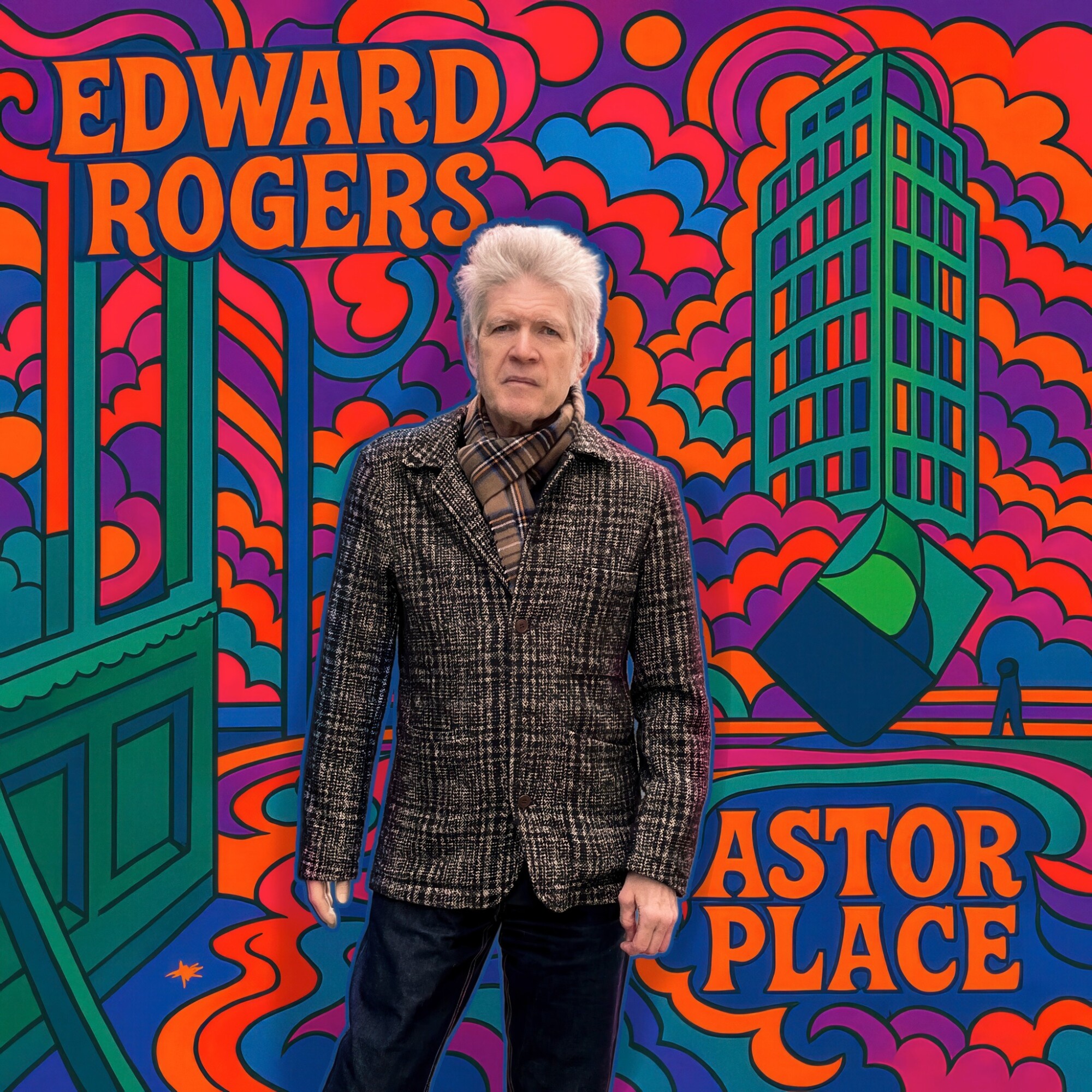
Many, many thanks to Mark and Frank for sharing so freely from the Wildwood archives!
The band signed a contract with Max Weiss' Fantasy label, but … airmaxweibe.blogspot.de
Saw Chalker in 1978 in Tim Moras barn at Wednsdays practice night with John Turner